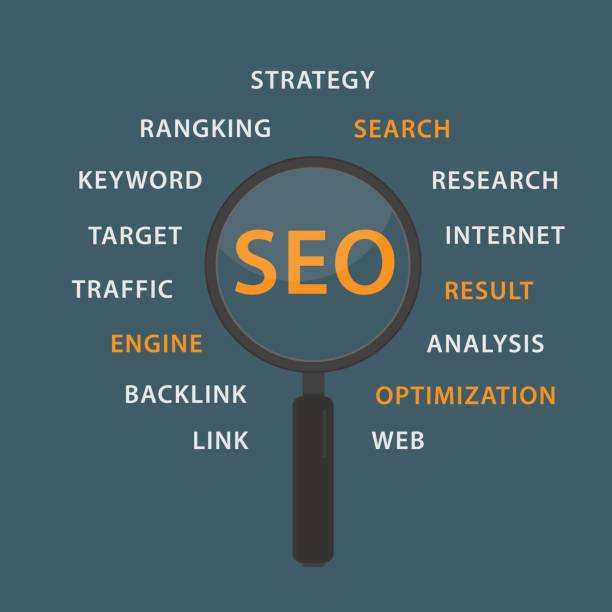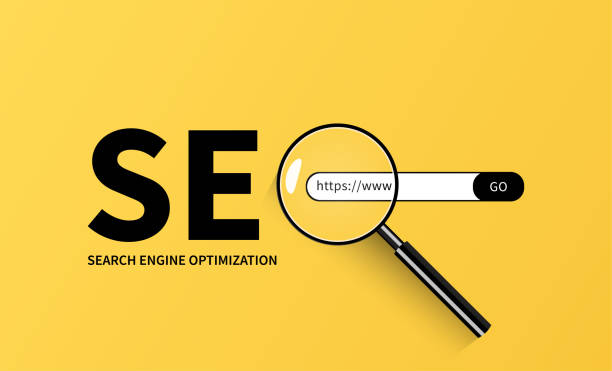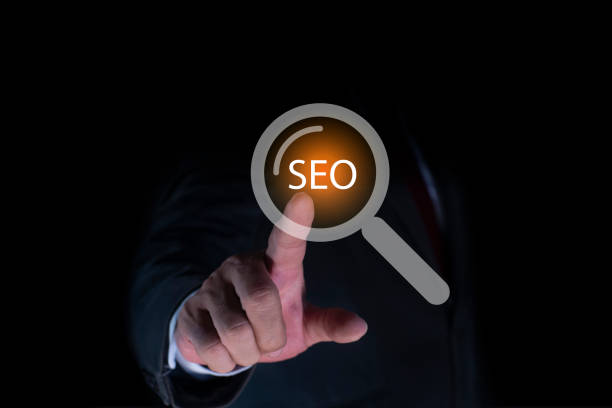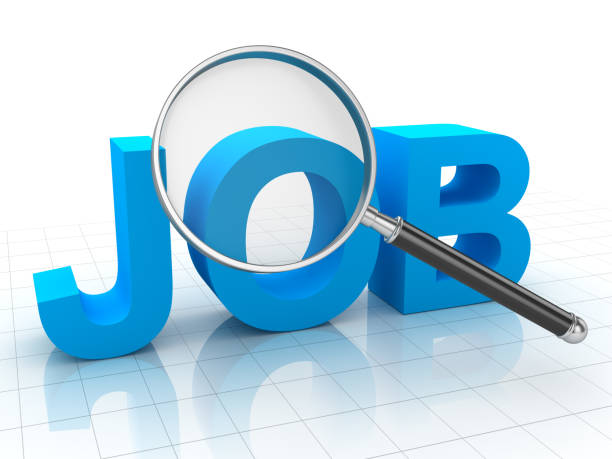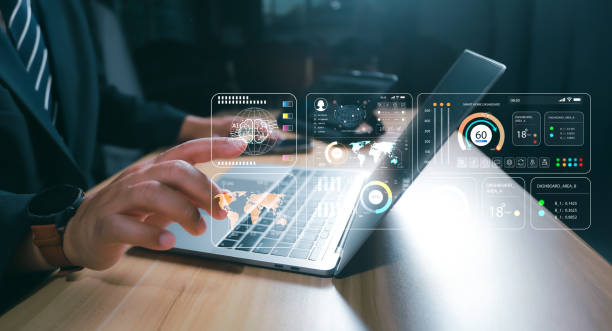### What is On-Page SEO? Definition, Importance, and Fundamentals
On-page SEO refers to the set of techniques and actions we take within our website to improve our site’s ranking in Google search results and other search engines. These actions include optimizing content, site structure, HTML tags, and other factors related to the website. On-page SEO plays a vital role in your site’s visibility, as it helps search engines better understand your site’s topic and content. When search engines have a correct understanding of your site, the likelihood that they will display your site in search results to users increases. The importance of on-page SEO is that it forms the foundation of your site’s SEO. Without strong on-page SEO, your off-page SEO efforts will not be as effective. In other words, on-page SEO is like the foundation of a building; if the foundation is weak, the building cannot stand strong.
Understanding the basics of on-page SEO is essential for every website owner. These basics include things like using appropriate keywords, creating quality content, and optimizing images. By following these basics, you can ensure that your site is optimized for search engines and users, and your chances of success in the online world increase.
Are you tired of your online store having visitors but no sales? Resaweb solves your core problem by designing professional online stores!
✅ Significant sales increase with targeted design
✅ Flawless user experience for your customers
⚡ Get free consultation!
Keyword Research: Finding the Best Words to Target
Keyword research is one of the most important steps of on-page SEO. Keywords are the words and phrases that users type into search engines to search for the information they want. The goal of keyword research is to find the best and most relevant keywords to target in your site’s content. These words should be both appealing to users and optimized for search engines. There are many tools for keyword research, including Google Keyword Planner, Ahrefs, Semrush, and Ubersuggest. These tools help you find search volume, competition, and related keywords.
Choosing the right keywords should be based on your SEO strategy. You should choose words that are relevant to your site’s topic, have acceptable search volume, and are not too competitive. You should also pay attention to the user’s intent when searching for a keyword. Is the user looking for information? Do they intend to buy something? Answering these questions will help you create content that meets the user’s needs and, as a result, improves your site’s ranking in search results. After finding keywords, you should use them strategically in your content. Use these words in the page title, meta descriptions, headings, and body text, but be careful not to use them unnaturally and excessively, as this can harm your site’s SEO.
Content Optimization: Creating Engaging, Valuable, and SEO-Friendly Content
Content optimization is the heart of on-page SEO. Engaging, valuable, and SEO-friendly content is content that is both useful and readable for users and optimized for search engines. This type of content can increase your site’s organic traffic and improve your site’s ranking in search results. To create SEO-friendly content, you need to pay attention to a few things. First, your content must be unique and original. Avoid copying other people’s content, as this can harm your site’s SEO. Second, your content should be relevant to your site’s topic and answer users’ questions and needs. Third, your content should be readable and understandable. Use short paragraphs, engaging headings, and appropriate images to make reading the content easier for users.
In addition, you should strategically use your keywords in your content. Use these words in the page title, meta descriptions, headings, and body text, but be careful not to use them unnaturally and excessively. You should also pay attention to the length of your content. Your content should be long enough to fully address the topic and provide useful information to users, but it should not be so long that it becomes tedious. Quality content not only helps your site’s on-page SEO, but it can also help increase your brand’s credibility and trust. By creating valuable content, you can turn users into regular visitors to your site and encourage them to buy your products or services.
| Element | Description | SEO Tips |
|---|---|---|
| Page Title (Title Tag) | The main title that appears in search results. | Include the main keyword, be engaging and short. |
| Meta Description | A short description that appears below the page title in search results. | Be engaging, include the keyword, and summarize the page content. |
| Headings | Used to organize and structure content (H1, H2, H3, …). | Include secondary keywords, be readable and logical. |
| Body Text | The main text of the page content. | Be high quality, relevant, readable, and include keywords. |
| Images | Used to make the content more attractive. | Be high quality, have alternative text (Alt Text) including the keyword. |
Image Optimization: Reducing Size, Using Alt Text, and Proper File Names
Image optimization is another important aspect of on-page SEO. High-quality images can make your content more attractive and readable, but large images can slow down your site’s loading speed and affect the user experience. To optimize images, you need to pay attention to a few things. First, reduce the size of your images. You can use online tools or image editing software to reduce the size of your images without sacrificing quality. Second, use alternative text (Alt Text) for your images. Alt Text is the text that is displayed if the image fails to load. This text should be a precise description of the image and include relevant keywords. Third, use an appropriate file name for your images. The file name should be relevant to the image content and include keywords. For example, instead of using the file name “IMG_1234.jpg”, use the file name “on-page-seo-tutorial.jpg”. By following these tips, you can optimize your images for search engines and improve your site’s loading speed. Image optimization not only helps your site’s on-page SEO, but it can also help improve the user experience. Users enjoy sites that load quickly, and the likelihood that they will return to your site increases.
Are you tired of your company’s website not meeting your expectations? With Resaweb, design a professional website that showcases the true face of your business.
✅ Increase the attraction of new customers and sales leads
✅ Increase the credibility and trust of your brand with your audience
⚡ Get a free website design consultation!
URL Structure: Creating Short, Descriptive, and SEO-Friendly URLs
URL structure is another important factor in on-page SEO. A URL, or web address, is the address of a page on your website. Short, descriptive, and SEO-friendly URLs are URLs that are both understandable to users and optimized for search engines. To create SEO-friendly URLs, you need to pay attention to a few things. First, keep your URLs short. Long URLs can be confusing to users and more difficult for search engines to process. Second, make your URLs descriptive. The URL should briefly describe the content of the page. Third, use keywords in your URLs. Using keywords in the URL can help improve your site’s ranking in search results. Fourth, use hyphens (-) instead of spaces ( ) in your URLs. Search engines consider hyphens to be word separators in URLs.
For example, instead of using the URL “www.example.com/page?id=123”, use the URL “www.example.com/on-page-seo-tutorial”. SEO-friendly URLs not only help your site’s on-page SEO, but they can also help improve the user experience. Understandable and descriptive URLs help users better understand the content of the page and easily find the pages they are looking for. Also, SEO-friendly URLs can help improve link sharing on social media. When users share your links on social media, SEO-friendly URLs can help increase link visibility and drive more traffic to your site. Optimizing URL structure is part of an SEO strategy.
Heading Tags: Using H1 to H6 Correctly
Heading tags from H1 to H6 are used to organize and structure page content. The H1 tag is the most important heading tag and should be used for the main title of the page. The H2 to H6 tags are used for subheadings and sub-subheadings. Using heading tags correctly can help improve the readability and understanding of content by users and search engines. To use heading tags correctly, you need to pay attention to a few things. First, only use one H1 tag on each page. The H1 tag should represent the main title of the page and should not be used for subheadings. Second, use the H2 to H6 tags in order of importance. The H2 tag should be used for the main subheadings, the H3 tag for sub-subheadings, and so on.
Third, use keywords in your heading tags. Using keywords in heading tags can help improve your site’s ranking in search results. Fourth, make your heading tags readable and engaging. Heading tags should briefly describe the content of the relevant section and encourage users to continue reading. By following these tips, you can use heading tags effectively to improve on-page SEO and the readability of your content. Heading tags not only help your site’s on-page SEO, but they can also help improve the user experience. Properly structuring content using heading tags helps users easily find the sections they are looking for and better understand the content of the page.
Click here to preview your posts with PRO themes ››
Meta Descriptions: Writing Engaging Descriptions to Increase Click-Through Rate
The meta description is a short description of the content of the page that appears below the page title in search results. Meta descriptions play an important role in increasing click-through rate (CTR). If the meta description is engaging and relevant to the content of the page, more users will click on your link. To write engaging meta descriptions, you need to pay attention to a few things. First, keep your meta descriptions short and concise. Meta descriptions should not be more than 160 characters. Second, make your meta descriptions engaging and relevant to the content of the page. The meta description should briefly describe the content of the page and encourage users to click on your link. Third, use keywords in your meta descriptions. Using keywords in meta descriptions can help improve your site’s ranking in search results. Fourth, use a call to action in your meta descriptions. A call to action can encourage users to click on your link. For example, you can use phrases like “Read more”, “Buy now”, or “Get a free consultation”. By following these tips, you can write engaging meta descriptions that increase your site’s click-through rate. Optimizing meta is very important for SEO.
| Feature | Description |
|---|---|
| Length | Maximum 160 characters |
| Content | An engaging summary of the page content, including keywords |
| Call to Action | Includes phrases to encourage users to click |
| Unique | Each page should have a unique meta description |
Internal Linking: Creating a Strong Network of Links Within the Site
Internal linking refers to creating links between different pages within a website. Internal linking plays an important role in on-page SEO. It helps search engines better understand the structure of your site and find the more important pages of your site. Also, internal linking can help improve the user experience. By linking to related pages, you can help users easily access the information they need. For effective internal linking, you need to pay attention to a few things. First, link to related pages. Your links should link to pages that are related to the content of the current page. Second, use appropriate anchor text. Anchor text is the text that is linked to another page. The anchor text should be descriptive of the linked page and include relevant keywords. Third, link to the more important pages of your site. Pages that are more important to you should receive more links from other pages of the site. By following these tips, you can create a strong network of links within your site and improve your site’s on-page SEO and user experience. Internal linking strategy is important.
Do visitors to your online store leave before buying? Don’t worry anymore! With Resaweb’s professional online store design services, solve the problem of converting visitors into customers forever!
✅ Significant increase in conversion rate and sales
✅ Unique and attractive user experience
⚡ Contact us now for a free consultation!
Site Speed: Optimizing Page Loading Speed for Better User Experience
Site speed is one of the important ranking factors in Google. Page loading speed has a direct impact on the user experience. Users who encounter a slow site usually don’t wait and leave the site. This can lead to an increase in bounce rate and a decrease in the site’s ranking in search results. To improve site speed, you need to pay attention to a few things. First, use quality hosting. Your hosting should have high speed and stability. Second, optimize your images. Large images can slow down your site’s loading speed. Use online tools or image editing software to reduce the size of images without sacrificing quality. Third, use an optimized content management system (CMS). Some CMSs, such as WordPress, have plugins that can help improve site speed. Fourth, use cache. Cache can significantly increase the loading speed of your site pages. By following these tips, you can improve your site speed and provide a better user experience for your visitors. Your site’s on-page SEO improves with speed optimization, and site traffic increases.
Click here to preview your posts with PRO themes ››
Mobile-Friendly: Designing a Responsive Website for Mobile Users
Given that more than half of internet traffic is done through mobile devices, being mobile-friendly is a necessity for any website. A mobile-friendly website is a website that automatically adapts to the screen size of mobile devices and provides a good user experience for mobile users. Google also gives a lot of importance to mobile-friendly websites and prioritizes them in search results. To create a mobile-friendly website, you should use responsive design. Responsive design allows you to create a single website that automatically adapts to the screen size of different devices. Also, you should pay attention to the loading speed of your site on mobile devices. Mobile users are usually not patient, and if your site loads slowly, they will leave it. By following these tips, you can create a mobile-friendly website and increase your site traffic. Site on-page SEO with optimization for mobile is very important because most users today use mobile. Optimizing on-page SEO can greatly help your business.
Frequently Asked Questions
| Question | Answer |
|---|---|
| What is On-page SEO? | On-page SEO refers to a set of actions that are performed inside the website and on the content of the pages in order to gain a better ranking in search results. |
| Why is on-page SEO important for a website? | On-page SEO helps search engines to better understand the content of your page and assess its importance. It also provides a better user experience for visitors. |
| What are the most important factors of on-page SEO? | The most important factors include keyword optimization, content quality, Title Tag, Meta Description, URL structure, Heading Tags (H1-H6), internal linking, and image optimization. |
| What role does the Title Tag play in on-page SEO? | The Title Tag is one of the most important on-page SEO factors that displays the title of your page in search results and the browser tab. It should include the main keyword and be attractive. |
| What is the importance of Meta Description in on-page SEO? | The Meta Description provides a summary of the page content and although it does not directly affect the ranking, it can increase the click-through rate (CTR) by encouraging users to click. |
| How is a keyword used in on-page SEO? | Keywords are phrases that users use to search for information in search engines. The proper and natural use of them in the content helps the search engine to recognize the topic of the page. |
| What is internal linking and what is its benefit in on-page SEO? | Internal linking means creating links between different pages of a website. This helps to distribute the authority of pages, helps search engine bots crawl, and improves the user experience. |
| How does image optimization affect on-page SEO? | Image optimization includes compressing the size, using an appropriate Alt tag, and naming files properly. This improves the page loading speed and helps search engines understand the content of the image. |
| What does quality content mean in on-page SEO? | Quality content means content that is comprehensive, accurate, unique, up-to-date, and user-friendly and meets the needs of users. |
| What role does URL structure play in on-page SEO? | Readable, short URLs including the main keyword help search engines and users to have a better understanding of the page content and improve the user experience. |
and other services of Rasa Web Advertising Agency in the field of advertising
Intelligent Data Analysis: A professional solution for digital branding with a focus on intelligent data analysis.
Intelligent Website Development: A dedicated service for online growth based on dedicated programming.
Intelligent Conversion Rate Optimization: An effective tool to improve SEO ranking by optimizing key pages.
Intelligent Sales Automation: A creative platform to improve campaign management with marketing automation.
Intelligent Advertising Campaign: A quick and efficient solution to improve SEO ranking with a focus on precise audience targeting.
and more than a hundred other services in the field of internet advertising, advertising consulting and organizational solutions
Internet Advertising | Advertising Strategy | Advertorial
Resources
On-Page Optimization on Moz
,The Definitive Guide To On-Page SEO by Ahrefs
,On-Page SEO: A Complete Guide From Semrush
,On-Page SEO: A Complete Guide From Search Engine Journal
? Are you looking for significant growth of your business in the online space? Rasaweb Afarin, with unparalleled expertise in the field of digital marketing, from optimized website design to comprehensive SEO strategies and content production, is your comprehensive solution for getting seen and attracting more customers.
📍 Tehran, Mirdamad Street, next to the Central Bank, South Kazerun Alley, Ramin Alley No. 6




